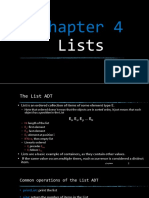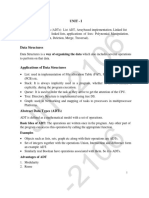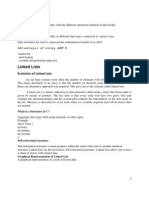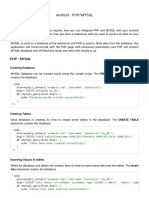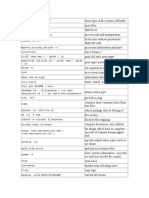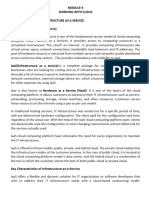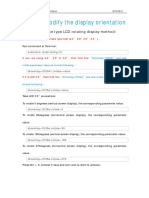0% found this document useful (0 votes)
5 views80 pagesUnit I - Linked List
This document provides an introduction to data structures and algorithms, focusing on concepts such as data types, abstract data types (ADT), and the analysis of algorithms. It covers linear data structures, particularly linked lists, detailing their types, operations, and implementations. The document also discusses the advantages of linked lists over arrays and includes examples of various operations such as insertion, deletion, and traversal.
Uploaded by
Om RathkanthiwarCopyright
© © All Rights Reserved
We take content rights seriously. If you suspect this is your content, claim it here.
Available Formats
Download as PDF, TXT or read online on Scribd
0% found this document useful (0 votes)
5 views80 pagesUnit I - Linked List
This document provides an introduction to data structures and algorithms, focusing on concepts such as data types, abstract data types (ADT), and the analysis of algorithms. It covers linear data structures, particularly linked lists, detailing their types, operations, and implementations. The document also discusses the advantages of linked lists over arrays and includes examples of various operations such as insertion, deletion, and traversal.
Uploaded by
Om RathkanthiwarCopyright
© © All Rights Reserved
We take content rights seriously. If you suspect this is your content, claim it here.
Available Formats
Download as PDF, TXT or read online on Scribd
/ 80


